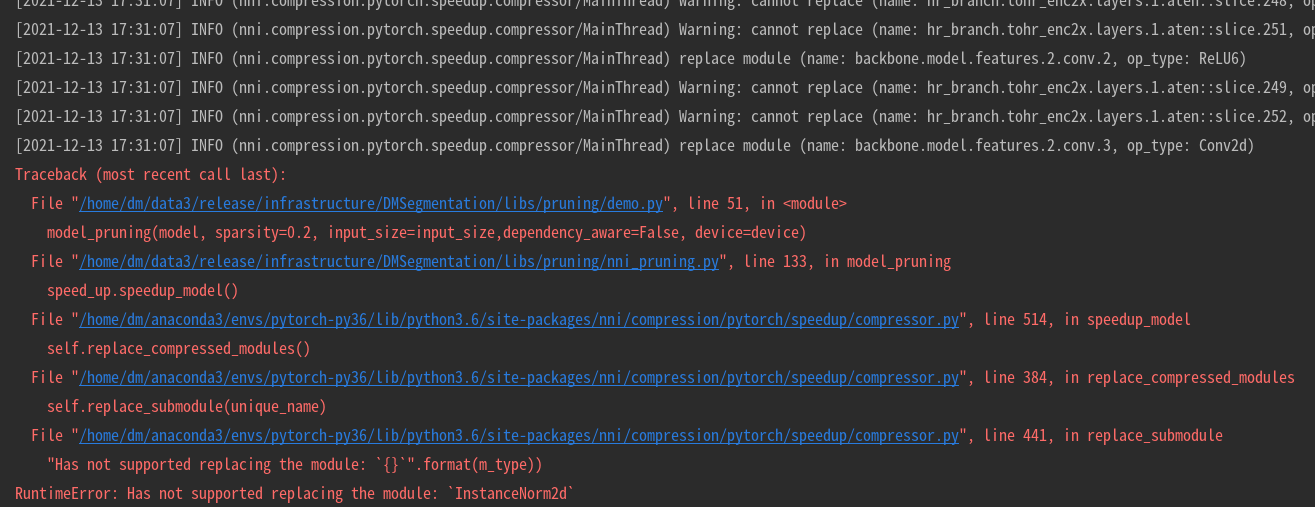Hi, @PanJinquan : Can you show me the complete source code? I try to reproduce this problem and solve it.
Open PanJinquan opened 2 years ago
Hi, @PanJinquan : Can you show me the complete source code? I try to reproduce this problem and solve it.
你好,大佬,已经更新了完整的代码 @zheng-ningxin
Describe the issue:
不支持Pytorch的nn.InstanceNorm2d
下面定义一个简单使用了
nn.InstanceNorm2d的SimpleModel模型, use_inorm=False可以正常pruning, 但use_inorm=True,出现:Has not supported replacing the module:InstanceNorm2d的错误Example:
@zheng-ningxin